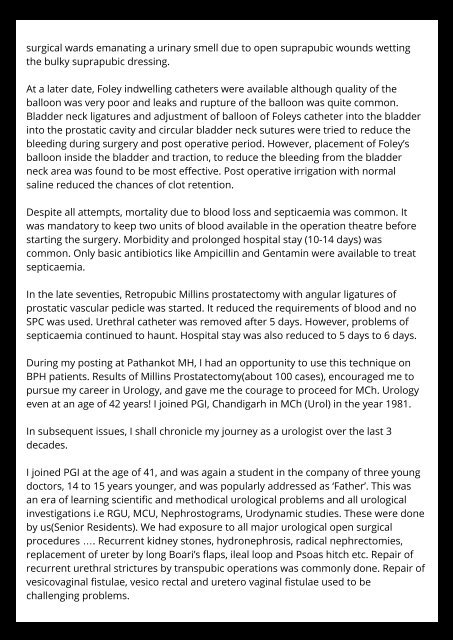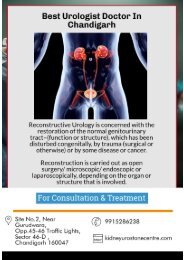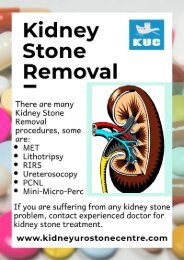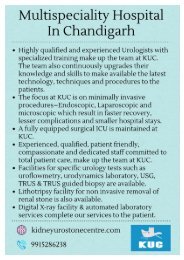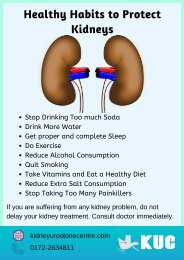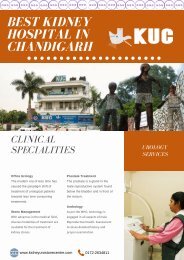Urology, Then….AND Now
Check out how urology was in the first phase and evolving steadily during the third phase.
Check out how urology was in the first phase and evolving steadily during the third phase.
You also want an ePaper? Increase the reach of your titles
YUMPU automatically turns print PDFs into web optimized ePapers that Google loves.
surgical wards emanating a urinary smell due to open suprapubic wounds wetting<br />
the bulky suprapubic dressing.<br />
At a later date, Foley indwelling catheters were available although quality of the<br />
balloon was very poor and leaks and rupture of the balloon was quite common.<br />
Bladder neck ligatures and adjustment of balloon of Foleys catheter into the bladder<br />
into the prostatic cavity and circular bladder neck sutures were tried to reduce the<br />
bleeding during surgery and post operative period. However, placement of Foley’s<br />
balloon inside the bladder and traction, to reduce the bleeding from the bladder<br />
neck area was found to be most effective. Post operative irrigation with normal<br />
saline reduced the chances of clot retention.<br />
Despite all attempts, mortality due to blood loss and septicaemia was common. It<br />
was mandatory to keep two units of blood available in the operation theatre before<br />
starting the surgery. Morbidity and prolonged hospital stay (10-14 days) was<br />
common. Only basic antibiotics like Ampicillin and Gentamin were available to treat<br />
septicaemia.<br />
In the late seventies, Retropubic Millins prostatectomy with angular ligatures of<br />
prostatic vascular pedicle was started. It reduced the requirements of blood and no<br />
SPC was used. Urethral catheter was removed after 5 days. However, problems of<br />
septicaemia continued to haunt. Hospital stay was also reduced to 5 days to 6 days.<br />
During my posting at Pathankot MH, I had an opportunity to use this technique on<br />
BPH patients. Results of Millins Prostatectomy(about 100 cases), encouraged me to<br />
pursue my career in <strong>Urology</strong>, and gave me the courage to proceed for MCh. <strong>Urology</strong><br />
even at an age of 42 years! I joined PGI, Chandigarh in MCh (Urol) in the year 1981.<br />
In subsequent issues, I shall chronicle my journey as a urologist over the last 3<br />
decades.<br />
I joined PGI at the age of 41, and was again a student in the company of three young<br />
doctors, 14 to 15 years younger, and was popularly addressed as ‘Father’. This was<br />
an era of learning scientific and methodical urological problems and all urological<br />
investigations i.e RGU, MCU, Nephrostograms, Urodynamic studies. These were done<br />
by us(Senior Residents). We had exposure to all major urological open surgical<br />
procedures …. Recurrent kidney stones, hydronephrosis, radical nephrectomies,<br />
replacement of ureter by long Boari’s flaps, ileal loop and Psoas hitch etc. Repair of<br />
recurrent urethral strictures by transpubic operations was commonly done. Repair of<br />
vesicovaginal fistulae, vesico rectal and uretero vaginal fistulae used to be<br />
challenging problems.


